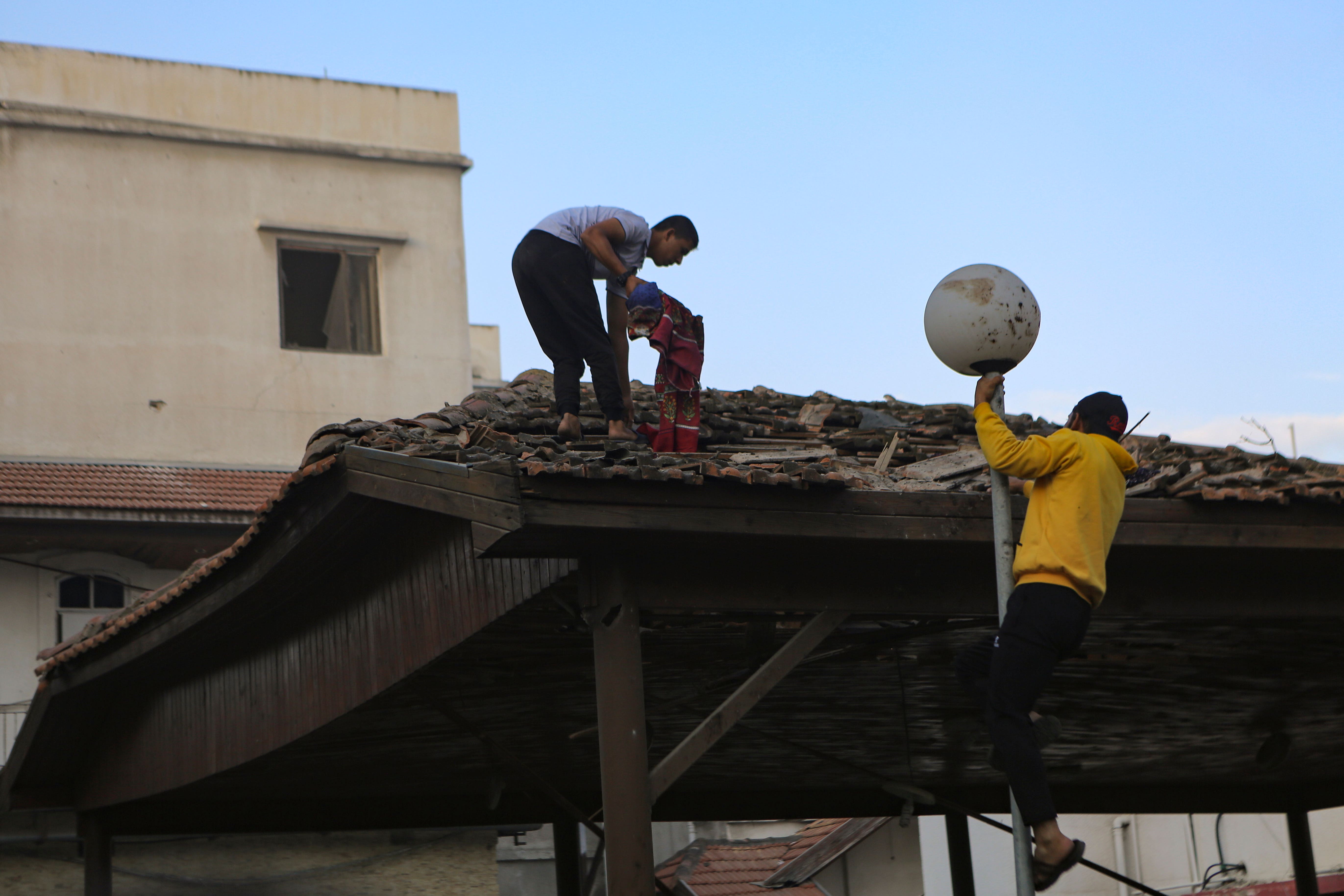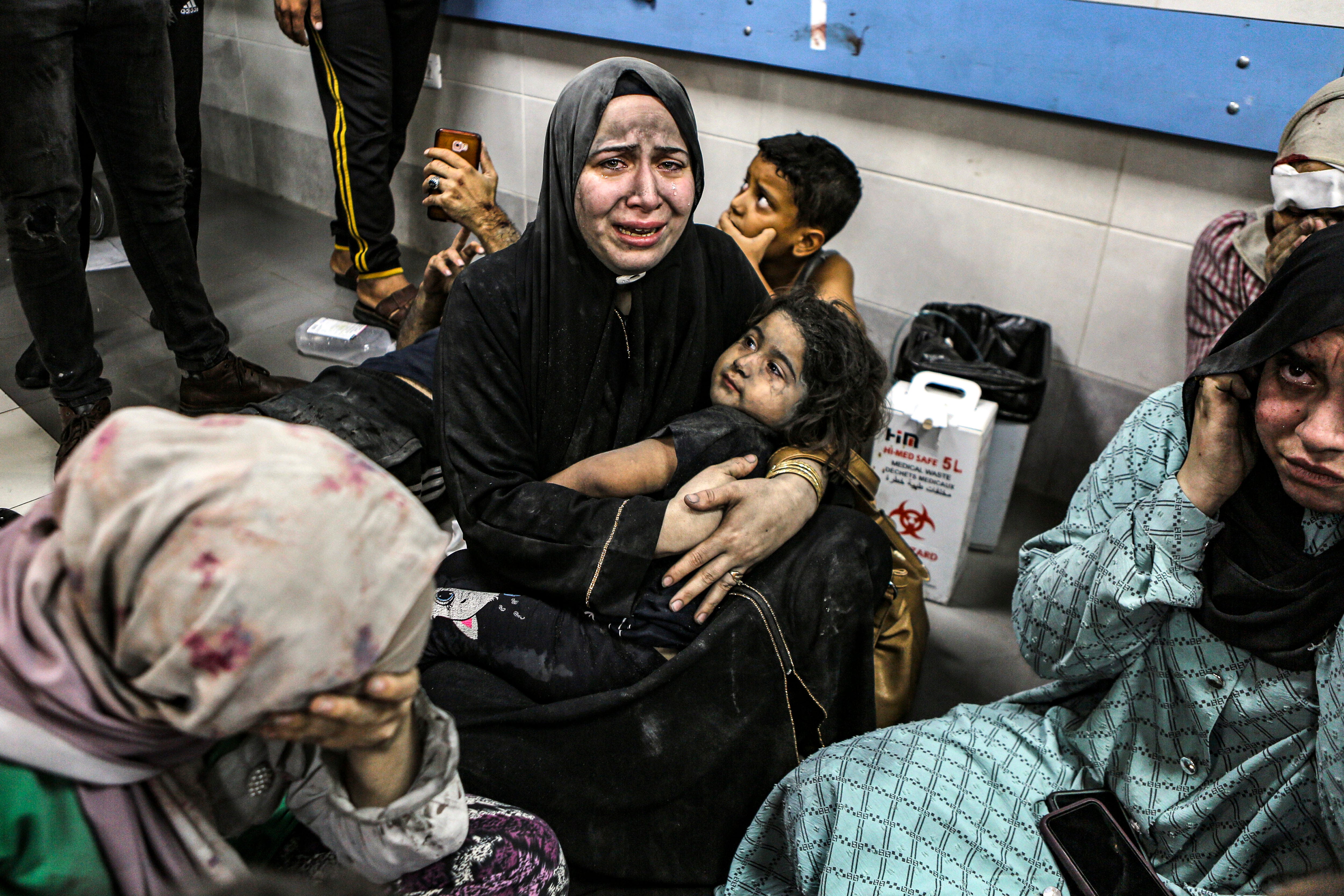Who is to blame for Gaza hospital bomb - we scrutinise the evidence
Hamas have blamed the deaths on an Israeli airstrike. Israeli have blamed a jihadist group’s failed rocket.
Your support helps us to tell the story
From reproductive rights to climate change to Big Tech, The Independent is on the ground when the story is developing. Whether it's investigating the financials of Elon Musk's pro-Trump PAC or producing our latest documentary, 'The A Word', which shines a light on the American women fighting for reproductive rights, we know how important it is to parse out the facts from the messaging.
At such a critical moment in US history, we need reporters on the ground. Your donation allows us to keep sending journalists to speak to both sides of the story.
The Independent is trusted by Americans across the entire political spectrum. And unlike many other quality news outlets, we choose not to lock Americans out of our reporting and analysis with paywalls. We believe quality journalism should be available to everyone, paid for by those who can afford it.
Your support makes all the difference.What happened?
At roughly 7pm local time on Tuesday night, a blast was reported in a hospital in Gaza City.
The Hamas-run health ministry initially claimed that between 200 and 300 people had been killed in what they said was an Israeli airstrike. They added that “hundreds are still buried under the rubble”.
An official later told Al Jazeera that the death toll was closer to 500.
Israel responded by saying they were investigating the incident. They subsequently denied involvement, suggesting the explosion was caused by a misfired rocket by the Palestinian Islamic Jihad (PIJ), who also denied their involvement.
US President Joe Biden said on Wednesday during a meeting with Israeli PM Benjamin Netanyahu that he believed the explosion had been caused “by the other side”.
Rishi Sunak, speaking in the House of Commons, said the UK intelligence services are working “at pace” to work out who is responsible for the blast at the hospital.
Western leaders, including German chancellor Olaf Scholz and European commission president Ursula von der Leyen, have called for an investigation.

Have videos been posted of the explosion?
Footage of what appears to be an explosion at the hospital emerged from Al Jazeera Mubasher later on in the evening. A second video from an Al Jazeera live feed showed the same incident.
That was geolocated, which involves comparing the background in the video with satellite images to corroborate the location, by GeoConfirmed, an outfit that works alongside the Centre for Information Resilience and Bellingcat.
The location was around the Al-Ahli Arabi Baptist Hospital in Gaza City. The exact location of the fire was zeroed down to the southeast side of Palestine Square.
It was also timestamped by the live feed.
What caused the explosion?
Both that and another Al Jazeera live feed showed a rocket being fired in the air and appearing to break up into two pieces, after which it hit what the geolocators believe is the Ahli Arab hospital.
A statement from GeoConfirmed read: “The above footage is showing a rocket fail and breaking up in two pieces, one falling on the hospital.”
At 11.28pm local time, the military correspondent for The Times of Israel posted a third video of a salvo of missiles being fired.
He said the shot was from surveillance camera footage from Netiv Haasara, north of the Erez Crossing on the Gaza/Israel border.
That camera angle was also geolocated. You can see the Israeli-erected border fence in front of the camera.

In the video, a salvo of missiles can be seen fired from what appears to be a position in western Gaza towards the east. One rocket is seen splitting into two. A large explosion is then seen in the middle of the camera angle. It took 20 seconds from the missile launch to explosion, roughly.
The Israeli Defence Forces (IDF) have since published what they claim is an intercepted call between two Hamas officials discussing the strike.
In the audio, one official says to the other that PIJ fired a salvo of rockets earlier that failed. They added: “They shot it coming from the cemetery behind the al-Ma’amadani hospital.”
This hospital appears to be west of the Al-Ahli hospital. The legitimacy of the audio, however, has not been confirmed.
Is there footage of the aftermath of the explosion?
Early this morning, the Israeli Air Force posted a video using drone footage of the aftermath of the explosion at the hospital.
It appeared to show that the explosion had taken place in the car park outside the hospital. It also indicated that there had been little to no structural damage to the actual hospital.

It was followed by images uploaded by Palestinian photographers in Gaza of the car park.
One photo, taken by Mohammed al Masri, whose photos have been used by Reuters, showed at least 18 cars surrounding a black spot where the fire appears to have originated.
OSINT experts subsequently compared the photos with the official Israeli drone footage. They concluded that the two images showed the same scene.
What could have caused the explosion?
Further analysis of the two scenes, supplemented by on the ground footage posted by Mr al Masri to Instagram, showed that “only 3 cars show any clear sign of kinnetic/structural damage”.
They added that cars within 10 metres of the damaged cars are relatively undamaged, leading that same analyst to conclude that “the photos of the scene are, to me, not consistent with an airstrike”.
Another analysis suggests that the explosion looks to have been caused by “a rocket motor failure”, adding that a “plum” can be seen coming off the rocket before the explosion.
They wrote: “After the rocket motor failure, the rocket disintegrates. One part lands first causing a small blast, likely part of the motor. The warhead then lands on the hospital causing the larger blast.”
All this information is openly-available intelligence. It does not constitute conclusive proof that the explosion in a hospital in Gaza City was caused by a misfired rocket.
The original article referred to Bellingcat as ‘an investigative outlet that itself works with international espionage agencies’, we are happy to correct the record and state the organisation has no history of working with such agencies.




Join our commenting forum
Join thought-provoking conversations, follow other Independent readers and see their replies
Comments